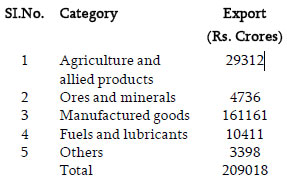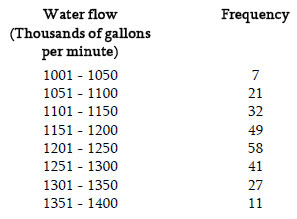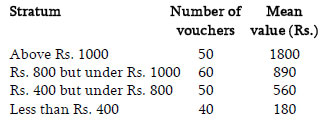(HOT) UPSC Current Affairs 2025 PDF
NEW! The Gist (NOV-2025) | E-BOOKS
(Exam Paper) UPSC IAS Mains 2008: General Studies
(Exam Paper) UPSC IAS Mains 2008: General Studies
Paper - I
1. Answer any two of the following (in about 150 words each) : 15 × 2 = 30
(a) “The emergence of new social classes in British India was the direct
consequence of the establishment of new social economy, new state system,
sadministrative machinery and Western education.” Discuss.
(b) “British vision of India had no single coherent set of ideas. On the
contrary, the ideas were shot through with contradictions and inconsistencies.”
Discuss.
(c) “Non-Cooperation Movement gave new direction and energy to the National
Movement.” Explain.
2. Write about the following (not exceeding 20 words each): 2 × 15 = 30
(a) Lakshmi Bai, Rani of Jhansi
(b) Ilbert Bill
(c) Lala Hara Dayal
(d) Vaikam Satyagraha
(e) Indian States Commission
(f) Bodhisattva
(g) Megasthenes
(h) Brihadeshwara Temple, Tanjore
(i) Perini Shivatandavam
(j) Allasani Peddana
(k) Golkonda Fort
(l) Chishti Silsila
(m) Chouth and Sardeshmukhi
(n) Poona Sarvajanik Sabh
(o) ‘Rama Sethu’
3. Answer any two of the following (in about 150 words each) : 15 × 2 = 30
(a) The winter rains in North India are largely related to Jet Streams and
Western Disturbances. Bring out the relationship.
(b) Agricultural Productivity in India remain low. Explain the reasons for this
situation.
(c) Bring out the pros and cons of Special Economic Zones.
4. Write about the following (not exceeding 20 words each): 2 × 5 = 10
(a) Buckingham Canal
(b) Terai Region
(c) Organic Farming
(d) Demographic Dividend
(e) Nor westers
5. Answer any one of the following (in about 250 words): 30
(a) What is meant by ‘Judicial Activism’ ? Evaluate its role in the context
of the functioning of Indian polity.
(b) Discuss the major extra-constitutional factors influencing the federal
polity in India.
6. Answer any two of the following (in about 150 words each) : 15 × 2 = 30
(a) Enumerate the Fundamental Duties incorporated in the Constitution after
the 42nd Amendment.
(b) Examine the demand for greater state autonomy and its impact on the smooth
functioning of Indian polity.
(c) Discuss the composition and functions of the Union Public Service
Commission.
7. Answer the following (in about 20 words each): 2 × 5 = 10
(a) What is a Censure Motion ?
(b) Distinguish between the auditing and accounting functions of the CAG of
India.
(c) Distinguish between a starred question and an unstarred one asked in the
Parliament.
(d) What is contempt of Parliament ?
(e) What were the two major considerations to have the Governor appointed and
not elected ?
8. Answer any one of the following (in about 250 words): 30
(a) What, in your opinion, are the causes of terrorism ? Suggest suitable
measures to deal with the threat of terrorism in India.
(b) Do you think there is a need for a review of the Indian Constitution ?
Justify your view.
9. Answer any two of the following (in about 150 words each) : 15 × 2 = 30
(a) Examine the role of caste in Indian politics.
(b) Discuss the problems in achieving National Integration in India.
(c) Examine the impact of Regional Political Parties in Indian politics.
10. Answer any one of the following (in about 250 words) : 30
(a) “Globalization has brought about a distinct class divide in India instead
of ushering in a classless society.” Critically examine this argument.
(b) “The conditions of the urban poor are more deplorable than that of their
rural counterparts.” Give your views.
11. Answer any two of the following (in about 150 words each) : 15 × 2 = 30
(a) Examine whether rural women in India have been empowered by their active
participation in Panchayat Raj System.
(b) “Decline in the sex ratio in India is an alarming sign for India’s future
social development.” Discuss.
(c) What should be the role of the media to project mass reality’ in place of
‘illusion of reality’ ?
12. Write about the following (in about 20 words each) : 2 × 5 = 10
(a) MTP Act
(b) Supreme Court on Ragging
(c) New Seven Wonders of the World
(d) M. M. Punchi Commission
(e) Lakshmi Mittal
Paper - II
1. Write notes on any two of the following (answer to each question should be in about 150 words): 2 × 30 = 60
(a) India and the New World Order
(b) Indo-Bhutan Relations
(c) India and China : Strategy to Boost Ties
2. Write about the following (answer to each question should be in about 20 words) : 5 × 2 = 10
(a) India’s Ocean Development Policy
(b) Major hurdles in Indo-Pak ties
(c) India-Nigeria : Abuja Declaration
(d) India-Bangladesh Border Road cum fencing
(e) India’s L.C.A. (Tejas)
3. Write about the following (answer to each question should be in about 20 words) : 5 × 2 = 10
(a) Pravasi Bharatiya Diwas
(b) Council for Promotion of Overseas Employment (CPOE)
(c) Overseas Citizenship of India (OCI) Scheme
(d) Indian Diaspora in Singapore
(e) Indian Diaspora and Bollywood
4. Answer any one of the following (in about 250 words) : 30
(a) Discuss India’s stand on agricultural issues in WTO’s Ministerial
Conferences since Doha Round.
(b) Assess the performance of India in attracting Foreign Direct Investment (FDI).
5. Discuss any two of the following topics (answer each question in about 150 words): 2 × 15 = 30
(a) Assistance to the States for Development of Export Infrastructure and
other Activities (ASIDE).
(b) Convertibility of Indian Rupee.
(c) India on Global Competitiveness Index-2007.
6. Write about the following (answer to each question in about 20 words) : 5 × 2 = 10
(a) Special, Drawing Rights (SDRs)
(b) NAMA
(c) Non-tariff trade barriers
(d) Current Account Balance
(e) Free Trade Area
7. Write on any one of the following (answer in about 150 words) : 15
(a) South-South Cooperation
(b) Universal Declaration of Human Rights
8. Briefly write about the following (answer to each question should be in about 20 words): 5 × 2 = 10
(a) Look East Policy and North-East India
(b) India at the Beijing Olympics
(c) India’s role in Afganisthan Today
(d) IPCC Report on Global Warming
(e) Indo-EU Economic Ties
9. Briefly write about the following (answer to each question should be in. about 20 words): 5 × 2 = 10
(a) G.C.C.
(b) G-77
(c) I.C.R.C.
(d) MERCOSUR
(e) INTERPOL
10. Answer any one of the following (in about 250 words) : 30
(a) In what way ‘Medical Biotechnology’ and ‘Bioengineering’ are useful for
technological development of India ?
(b) What do you know about Indian National Satellite Systems ? Describe its
important features.
11. Explain any three of the following (in about 150 words each) : 3 × 15 = 45
(a) Internet Protocol Television (IPTV)
(b) Spintronics
(c) Wifi
(d) Components of Robots
12. Write brief notes on all the five (in about 20 words each) below : 5 × 2 = 10
(a) Copyright and Trade-mark
(b) TIFAC
(c) Aspartame
(d) Gene doping
(e) Sappan
13.
(a) The principal exports of India for the financial year 2001-2002 are given in the following table :

Represent the above date by a suitable diagram and comment on the export performance of the country. 6
(b) Prior to constructing a, dam on a river the engineers performed a series of tests to measure the water flow at the proposed location of the dam. The results of the testing were used to construct the following frequency distribution.

Construct an appropriate diagram to estimate what proportion of the flow occurs at less than 1300 thousands of gallons per minute. Give the estimate. 6
14.
(a) A company files its sales vouchers according to their sales value so that they falls in four strata. Two hundred, vouchers are received on a business day. The information is listed in the following table:

Calculate the mean value and the total value of the vouchers received by the company on the day in question. Use the histogram to estimate the modal value of the vouchers. 6
(b) A trip to a destination is made in the following way: 900 kms by train at an average speed of 60 kms/hr 3000 kms by plane at an average speed of 500 kms/hr 400 kms by boat at an average speed of 25 kms/hr 15 kms by taxi at an average speed of 45 kms/hr What is the average speed for the entire journey ? 6
15.
(a) A hotel owner has nine refreshment stalls located at various points in a large compound. He wants to make one of the stalls as a supply place such that amount of travel between the stalls and the source of supply is minimized. He has to visit all stalls almost equal number of times with a view to supplying the refreshment stuff everyday. The distances of stalls from the first stall are 250, 500, 650, 800, 850, 910, 940 and 1000 yards respectively. Which stall should he choose to use as the supply place ? Give reason in favour of your answer. 2
(b) In a statistical investigation of 1003 families of a city, it was found that 63 families had neither a radio nor a TV, 794 families had a radio and 187 had a TV. How many families of the city selected in the sample had both ? 2
(c) The mean monthly income of a person is Rs. 18190/and his mean monthly expenditure comes out to be Rs. 17930. What is his average monthly saving? 2



